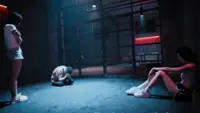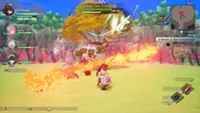Kratos meets Ratatoskr, the talking squirrel who is the caretaker of Yggdrasil, in "God of War Ragnarok." — (Sony Interactive Entertainment/TNS)
The “God of War” franchise has never been afraid to take narrative chances. The series has been retconned here and there, and that hasn’t stopped developers from telling compelling stories about Kratos and his complicated relationship with the gods.
With the second part of his saga, Sony’s Santa Monica Studios essentially gave Kratos a fresh slate and a new mission. The god who slaughtered the entire Greek pantheon had to be a single dad for his son, Atreus. The boy’s mother, Laufey, recently died, and the first game of the new series focused on the journey to spread her ashes on the tallest peak of the Nine Realms.
Already a subscriber? Log in
Save 30% OFF The Star Digital Access
Cancel anytime. Ad-free. Unlimited access with perks.





